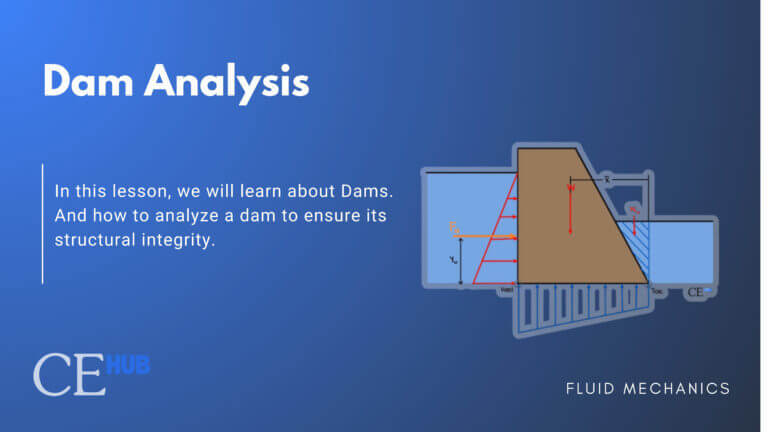Fluid Mechanics
DEFINITION
Fluid Mechanics is a branch of engineering that with the properties of the fluid at rest or in motion
Fluid mechanics is a branch of physics that deals with how fluids typically liquids or gases affect, and are in turn affected by, the physical world whether the fluid is at rest or in motion. For engineering students it’s one of the basic subjects you’re introduced to early on, and for good reason. Knowledge about fluid behavior is of fundamental importance to mechanical, civil, chemical, and many other fields of engineering.
At its core, fluid mechanics is split into two parts:
Fluid Statics
Deals with fluid in rest.
Fluid Dynamics
Deals with fluid in motion
Key Equations
| Bernoulli Equation |
| Density |
| Buoyant Force |
| Specific Weight |
| Viscosity |
| Continuity Equation |
| Pressure |
| Hydrostatic Force (horizontal) |
| Surface Tension |
| Absolute Pressure |
| Pressure variation with depth (h) |
Summary
Chapter 1: Properties of Fluid
- Density is the ratio of mass of fluid and its volume.
- Specific weight is the weight of the fluid per unit volume.
- Specific Gravity is the ratio of density of a substance to the density of water.
Chapter 2: Hydrostatic Pressure
- Hydrostatic pressure is the pressure exerted by a fluid at rest due to its weight.
- The pressure at an point of a static homogenous fluid is the same in all directions.
- Atmospheric Pressure is the pressure exerted by the atmosphere. It varies with altitude and weather conditions.
- Absolute pressure is measured relative to a perfect vacuum, meaning it includes atmospheric pressure.
- Gauge pressure is the pressure measured relative to atmospheric pressure. It indicates the pressure above or below the atmospheric level.
Chapter 3: Hydrostatic Forces
- Hydrostatic Forces on Plain Surface
- Hydrostatic Forces on Curved Surface
- Moment of Inertia along the Neutral Axis
Chapter 4: Buoyancy
- Buoyancy is the upward-directed force a fluid exerts on an object that’s been immersed into it.
- Archimedes’ Principle: Any object completely or partially submerged in a fluid experiences an upward force (buoyant force) equal to the weight of the fluid displaced by the object.
Chapter 5: Stability on Floating Bodies
Chapter 6: Analysis of Dams
- Analysis of Dam
- Overturning, Sliding and Uplift Pressure
- Foundation Pressure
Chapter 7: Bernoulli’s Equation
- Bernoulli Equation states that in a steady, incompressible, and frictionless flow, the total mechanical energy of the fluid remains constant along a streamline.
- Energy cannot be created or destroyed—only transferred.
- Bernoulli’s Equation with Correction Factor
Chapter 8: Laminar vs Turbulence
- The Reynolds number (Re) predicts whether a flow is laminar or turbulent. It’s a dimensionless number comparing inertial and viscous forces:
- Laminar flow is smooth and orderly.
- Turbulent flow is chaotic.
- Head loss is related to the flow and the properties of the pipe according to the Darcy-Weisbach equation:







